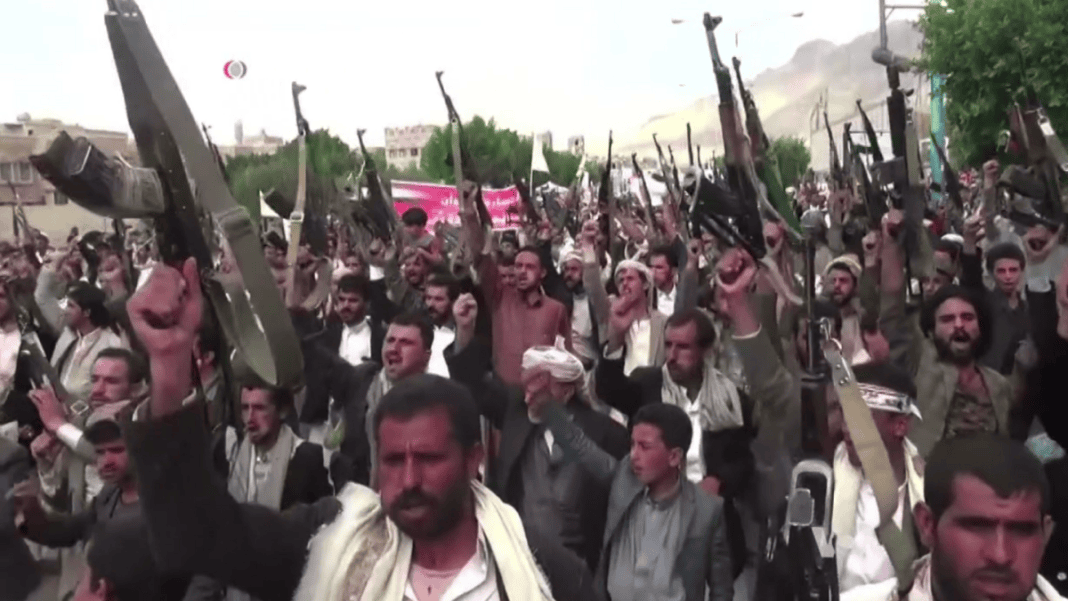1.0 Introduction
Ansar Allah aka Houthi Movement is a Yemeni Shia Islamist group with both political and military components, founded in the 1990s. Since 19 November, the Houthis have attacked multiple commercial and military vessels in the Red Sea, sinking the Rubymar and damaging ships outright. Recent Houthi-led attacks on Red Sea vessels target those with Israeli links because of opposition to Israel’s actions in Gaza [Source]. Their recent attacks on vessels in the Red Sea have drawn military responses from the United States and the United Kingdom, with four separate operations taking place since 12 January. The most recent strike hit 18 separate Houthi sites across eight different locations in Yemen. [Source]
However, Houthi ambitions extend beyond threatening Red Sea shipping. Delving deeper into their ideology, organisational structure, and military capabilities reveals a movement with aspirations that reach far beyond maritime disruptions, from their motto and symbols to their leadership hierarchy and military prowess. Understanding the Houthi movement sheds light on its broader objectives and implications for regional security. Additionally, examining their strategic alliances, financing sources and other logistical organisations provides valuable insights into their role in Yemen’s complex conflict landscape and their potential impact on the broader geopolitical dynamics of the region.

2.0 Mottos, Symbols, and History
The Houthis adopted the slogan:
“Allah is great, death to the US, death to Israel, curse the Jews and victory to Islam”
in the aftermath of the 2003 Iraq invasion by the US. They officially named themselves Ansar Allah or supporters of God following the invasion. Hezbollah also became the role model for the Houthis, as they could “successfully expel the Israeli army from the country”. The Iranians and the Houthis also share a common enemy Saudi Arabia, leading to their collaborations throughout the years [Source].
2.1 Who are the Houthis?
The Houthis, also known as Ansar Allah (“Supporters of God”), are a Shia Muslim rebel group originating in northern Yemen. The Houthis, originally led by Hussein Badreddin al-Houthi, are not just a political and militant movement, but also a family or clan with significant influence in northern Yemen. Their rise to prominence began in the early 2000s, marked by their emergence as a Zaidi Shia revivalist group. They advocated for the empowerment of Yemen’s Zaidi community and opposed foreign intervention, notably from Saudi Arabia and the United States. From 2004 to 2010, conflicts erupted between the Houthis and the Yemeni government, centred around the Saada Governorate. These conflicts, characterised by intense fighting and multiple cease-fires, solidified the Houthis’ significant political role in Yemen.[Source][Source].
The Houthis seized the Yemeni capital, Sana’a, in 2014, prompting a military intervention by a Saudi-led coalition. The intervention by the Saudis supported President Mansur Hadi’s internationally recognized government. [Source]. Despite facing significant military opposition, the Houthis have maintained control over large parts of Yemen, including Sana’a, and continue to exert influence over Yemeni politics and society.
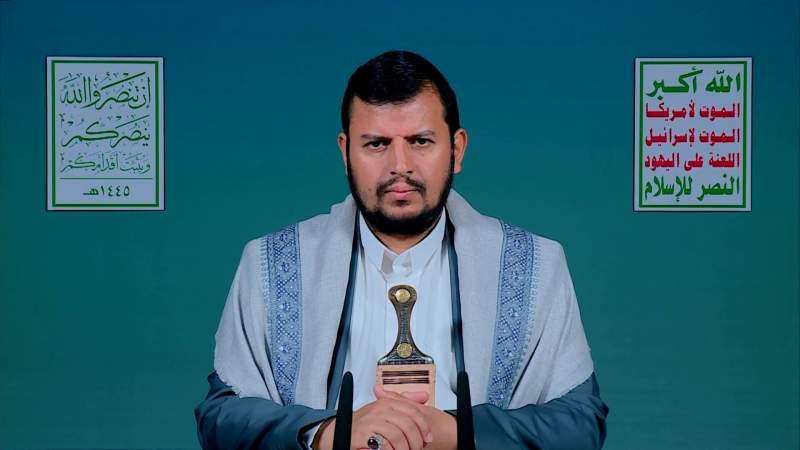
3.0 Organisation
3.2 Command Structure
The organisational structure of the Houthi movement encompasses military regional commands (MRCs), elite forces, and a parallel supervisory system. Within this structure, the Houthi leadership has established Military Regional Commands (MRCs) to oversee specific geographic areas. Different commanders then lead operations in the various geographic regions. Elite forces such as the Presidential Protection Brigades and the Mobile Region strategically intervene in critical areas, supported by specialised aerospace and naval units [Source].
Other sons of Badreddine also established social networks in the 1990s that also influenced the Houthi power structure. Families with marital connections to the Houthi family, such as the Ijri, Mutawwakil, Mo’ayyed, Tawoos, and Mashat families, hold influential supervisory roles within the movement [Source].
Besides traditional military and social structures, the Houthi movement has established a parallel supervisory system alongside official state institutions. The system was started in Sa’ada governorate in March 2011 and expanded after the Houthi takeover of Sana’a in September 2014.
It involves armed individuals known as “supervisors” (mushrif) deployed across ministries to combat corruption and ensure loyalty to the Houthi authority. Each governorate has a general supervisor directly appointed by Abdelmalek al-Houthi. The governorates also operate under the authority of the revolutionary committee, led by Mohammed al-Houthi [Source].
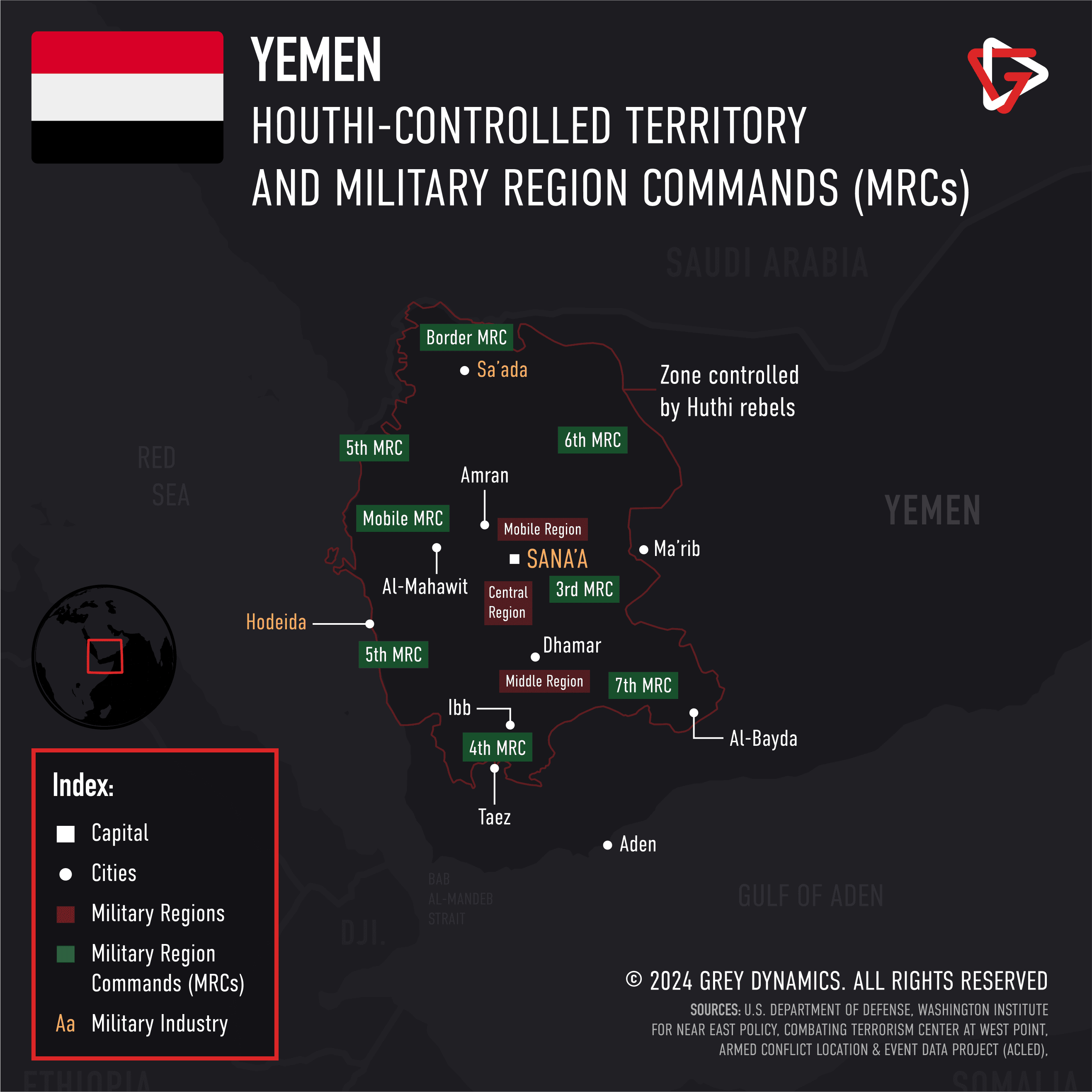
3.3 The Supervisory System
The supervisory system mirrors state institutions, with supervisors forging symbiotic relationships with ministers, governors, and other officials, effectively assuming their decision-making roles. Supreme Revolutionary Committee members appoint supervisors, who report directly to Abdulmalik al-Houthi. And, the selection of the supervisors does not include formal election or transparent appointment. [Source].
The movement also established new institutions like the General Authority of Islamic Alms and the General Authority of Endowments. These institutions aim to consolidate control over revenue streams. The Supreme Council for the Management and Coordination of Humanitarian Affairs and International Cooperation oversees NGOs and humanitarian aid, further centralising authority within the movement [Source].
One of the most prominent figures within this supervisory system is Mahdi al-Mashat, who holds significant influence and authority within the movement’s leadership. Mahdi al-Mashat, a prominent figure within the Houthi movement, actively took part in various political and military endeavours. He served as a member of the Supreme Political Council from May 2016, representing the hawkish faction.
Following the assassination of Saleh Ali al-Sammad on 19 April 2018, al-Mashat assumed the role of chairman of the Supreme Political Council. He holds the position of chief of the separatist political authorities of northern Yemen, while Abdul-Malik al-Houthi leads the movement. His tenure was prolonged for three more terms in July 2021. The Houthi supervisors and governors are carefully selected supervisors among loyalists of the Houthi inner circle, many of whom are directly connected with the leadership through kinship networks [Source].
3.4 Key Figures of Ansar Allah
Leadership and command structure within the Houthi movement are entrenched in Yemen’s historical and tribal context. Individuals who voice objections to the governance structure or Abdelmalek’s leadership are often marginalised or silenced. For example, Mohammed Abdelazim al-Houthi, a cousin of Badreddine, disappeared from public view after expressing opposition to Abdelmalek’s leadership [Source].

Abdul-Malik al-Houthi assumed leadership of the Houthi Movement after the death of his brother Hussein in 2004. He holds the title of the “leader of the revolution” (qa’id al-thawra) on Houthi media, is revered for his Hashemite Zaidi lineage, and is regarded as a descendant of the Prophet.
Abdelkhaleq al-Houthi, Abdul-Malik’s younger brother, serves as the second in command within the movement, holding crucial military positions. He plays a significant role in strategic decision-making.
Abdelkarim al-Houthi holds vital positions in the executive office and serves as interior minister. His role involves overseeing key governance aspects and internal security.
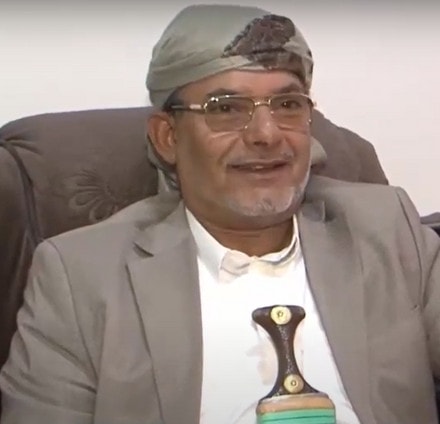
Yahya al-Houthi holds the position of education minister within the Houthi movement, contributing to the ideological and educational aspects of the movement’s agenda.
The Mujahideen is an inner circle within the Houthi movement. It comprises individuals with close ties to the Houthi family, primarily from the Sa’ada governorate. They play a crucial role in the decision-making and have limited access to Abdul-Malik, forming the core loyalists of the movement.
3.4 Legacy Units
Ansar Allah absorbed legacy units from Saleh’s presidency as part of its organisational structure. This assimilation of Saleh-era military officers contributed to developing a more centralised and professional operational control system within the movement. During the six Sa`da wars (2004-2010), its engagement with the Saudi-led coalition helped develop a more centralised control system. Additionally, external influences such as advice from the IRGC-QF and Lebanese Hezbollah played a role in shaping the organisation’s leadership strategies. This transition led to the establishment of key roles within the Jihad Council. The roles included operations and military regions officials, tasked with coordinating multi-front campaigns and allocating resources to various military regions. [Source]
4.0 Military Capabilities

The six wars fought between 2004 and 2010 between the Houthis and the government of Ali Abdullah Saleh marked a turning point in Ansar Allah’s military development. The Houthis’ adoption of the slogan “Allah Akbar, Death to America, Death to Israel, Curse to the Jewish and Victory to Islam” epitomised their resistance against perceived external interference. That then allowed them to garner support among some segments of Yemenis. Despite initial setbacks and heavy casualties, the Houthis gradually amassed weaponry through smuggling and arms trade. They also developed valuable tactics in guerrilla warfare and ground combat [Source].
The Houthi military arsenal comprises a diverse range of weapons acquired from Iran and legacy weapons from the former Soviet Union. Additionally, they possess arms from the United States and engage in indigenous production. The expansion of missile stockpiles and engineering prowess is noteworthy. This is driven by advancements in unmanned aerial vehicle (UAV) technology, facilitating precise targeting of adversary assets.
The UAV models, such as the HudHed-1, Rival (RAGHIB), and Rased, along with short- and medium-range missile systems like the Qasef-1 series and SAQEB missiles, also notably bolster Houthi offensive capabilities. Their missile reserves and engineering capabilities have expanded, with advancements in UAV technology enabling precision strikes against enemy targets. The deployment of UAVs such as the HudHed-1, Rival (RAGHIB), and Rased, alongside short- and medium-range missiles like the Qasef-1 series and SAQEB missiles, has significantly enhanced the Houthis’ offensive capabilities [Source],[Source],[Source]. Moreover, the Houthis have showed proficiency in utilising advanced defence systems, including Sammad UAVs. These UAVs are equipped with explosive warheads capable of targeting enemy installations with more precision than traditional artillery. [Source].

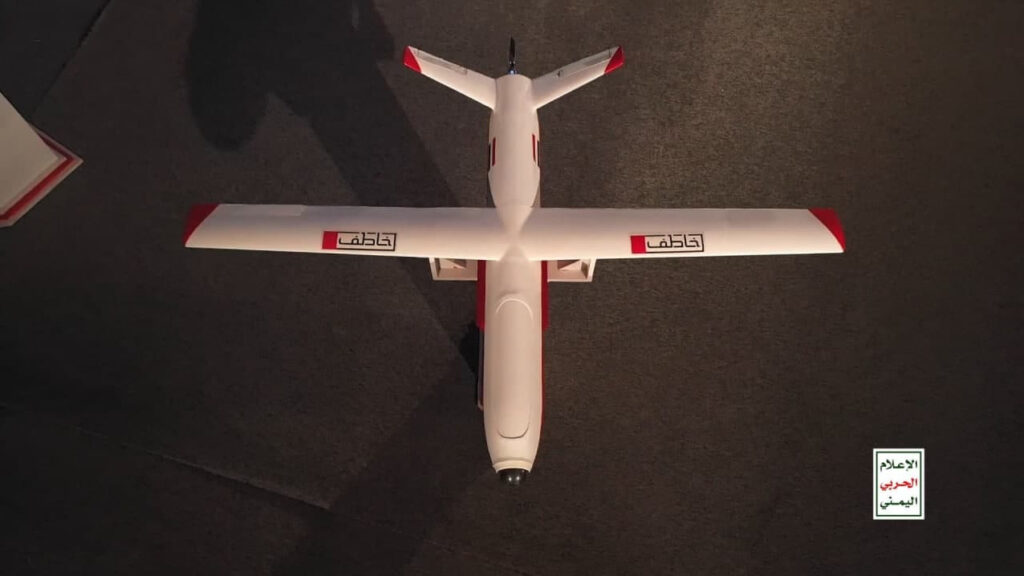
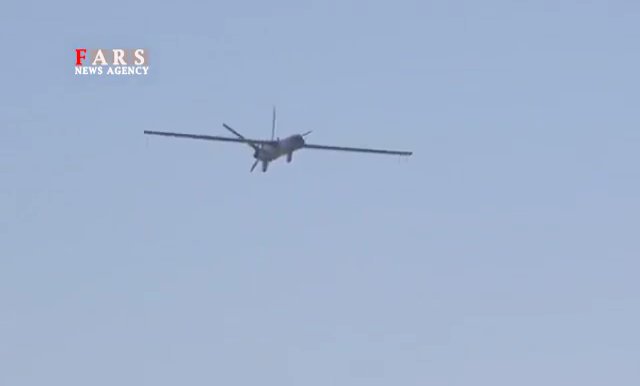
4.1 Houthi Long Range Capabilities
Houthis have demonstrated a remarkable evolution in their military capabilities, significantly impacting the balance of power in the Yemeni conflict. One of the most notable aspects of the Houthi military capability is their possession and use of ballistic missiles. In 2018, Saudi Arabia intercepted two missiles over the capital, Riyadh [Source]. On 25 March 2022, the Houthis also launched a large-scale attack on Saudi Arabia using ballistic and cruise missiles targeting oil and energy industries in the region [Source]. These missiles, often of Iranian origin or design, pose a significant threat to regional stability and have prompted international condemnation.
4.2. Long Range Drones
In addition to ballistic missiles, the Houthis have deployed drones for reconnaissance and offensive operations. Throughout the conflict, the Houthis have showed a growing proficiency in drone technology, adapting it to their asymmetric warfare strategy. They have used drones to target military installations, airports, and infrastructure in Yemen and across the Saudi border.
4.3. Anti-Aircraft Systems
The Houthis have deployed anti-aircraft systems, including shoulder-launched surface-to-air missiles (MANPADS), to target coalition aircraft conducting airstrikes over Yemen [Sources]. On 19 February, a US MQ-9 Reaper drone crashed in Hodeodah after being shot down by a Houthi surface-to-air missile [Source]. These defences have inflicted losses on coalition forces and restricted their aerial operations in certain areas.
4.4. Naval Force
The Houthis maintain a small naval force primarily operating in the Red Sea. They have conducted maritime attacks targeting commercial shipping and military vessels, including Saudi oil tankers [Source],[Source]. While their naval capabilities are limited compared to other branches, they pose a threat to maritime security in the region. The Houthi militia boasts a significant ground force of both regular fighters and tribal militias. They have showed resilience and adaptability in urban combat, seizing and defending their territory in cities like Sana’a and Taiz. Also, Houthi fighters are often well-armed and motivated, drawn from both ideological commitment and tribal loyalties [Source].
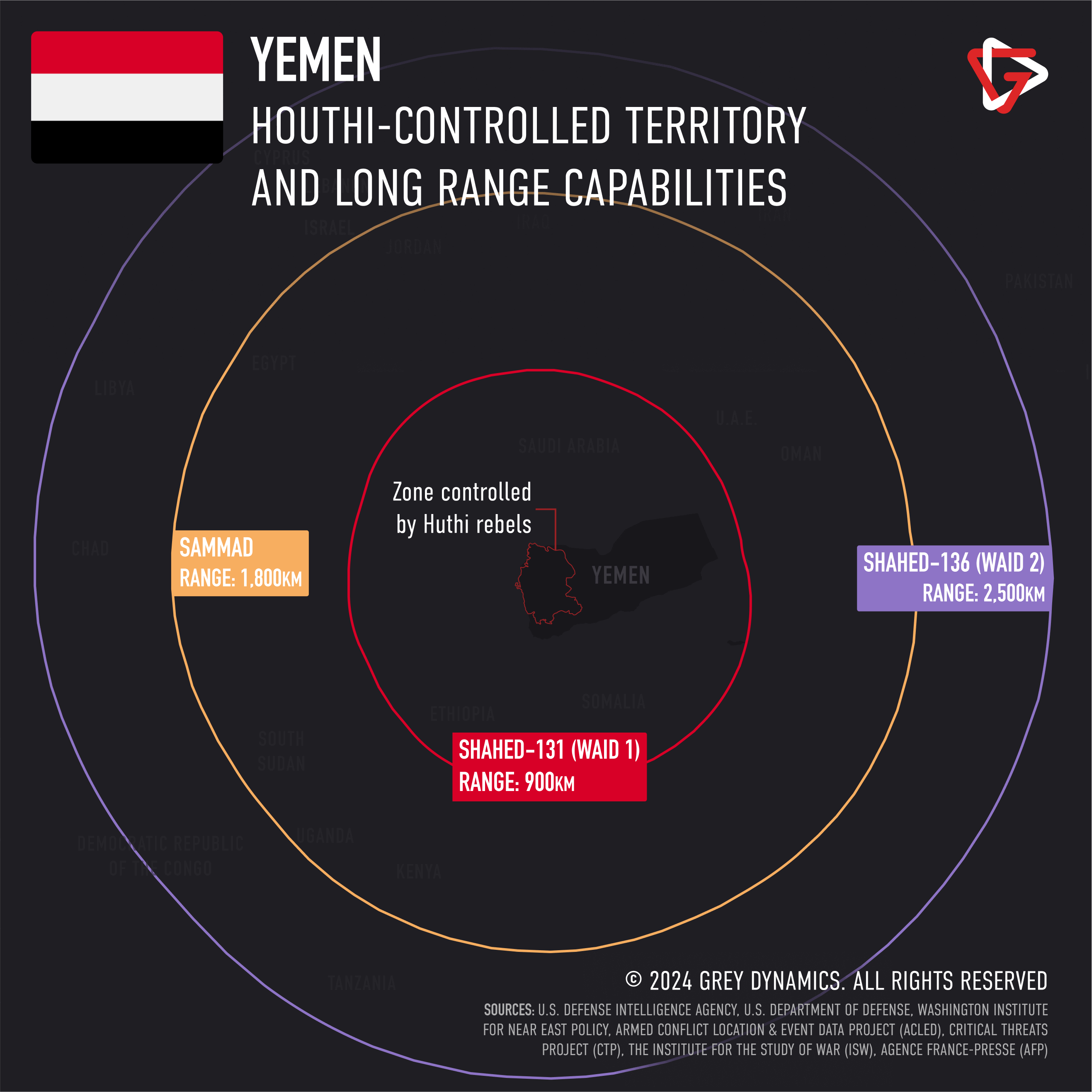
5.0 Implications for Regional Security
In September 2014, after the seizure of San’a, negotiators brokered a Peace and National Partnership Agreement. The goal was to help devise a technocratic government which includes the Houthis and other political factions. Contingent upon the withdrawal of Houthi forces [Source]. Iran’s efforts in Yemen also play a key role in bolstering Houthi military capabilities. Since 2014, they funded the group. This has resulted in Saudi Arabia and the UAE intervening in the conflict in 2015. Recent attacks in Saudi and UAE have increased with cargo ships attacked off the Yemeni coast. The Houthis targeted 26 commercial vessels and civilian port infrastructure between January 2018 and October 2022. [Source].
Since then, the Houthis have deployed multiple attacks in Saudi and along the Red Sea recently. Recent Houthi attacks raised concerns in the region as part of the Red Sea counterattacks. As Iran backs the Houthis, the Red Sea escalation might depict Iran’s axis of resistance in the broader geopolitical landscape. The recent attacks have forced 18 international shipping lines to reroute their shipping. The attacks also instigated responses such as the US-led Prosperity Guardian. Although Saudi Arabia did not take part in the operation, they threatened an escalation in the conflict in Yemen [Source].
6.0 Conclusion
Ansar Allah’s military capabilities, organisational structure, and tactical agility allow for influence in Yemen’s complex conflict landscape. While ceasefire talks have shown promise, the Houthi attacks on Red Sea ships pose a significant threat to peace within Yemen. The potential for a US military response to these attacks could jeopardise delicate negotiations and unravel the fragile ceasefire conditions.
Moreover, concerns arise over the Houthis’ increased recruitment and their deployment of troops around Marib. This potentially signals expanded ambitions and further destabilisation. As tensions escalate in the Red Sea, Ansar Allah’s actions and motivations are scrutinised. While their attacks may stem from a desire to support Palestine and Gaza, they also carry significant implications for Yemen’s peace and stability. Ansar Allah’s military evolution has transformed them into a formidable force capable of challenging the Saudi-led coalition. Their ability to inflict significant damage on enemy targets both within Yemen and across the border highlights their strategic importance in the ongoing conflict as well as regionally.
6.1 Future Trajectories
Considering the current trajectory of Ansar Allah, also known as the Houthi movement, one can imagine several potential future scenarios. First, there is the possibility of continued escalation in the conflict, particularly in the Red Sea region, as the group maintains its aggressive stance towards maritime targets. This could lead to further disruptions in shipping lanes and increased tensions with international actors involved in maritime security operations. Second, Ansar Allah’s close ties with Iran may deepen, potentially leading to increased support from Tehran, both militarily and politically.
This could further internationalise the Yemeni conflict and exacerbate regional rivalries. Additionally, Ansar Allah’s continued control over significant territory in Yemen, including the capital Sana’a, suggests that they will remain a key player in any future political negotiations or power-sharing arrangements. Last, there’s a possibility of internal fractures within the Houthi movement, particularly as different factions may have divergent objectives or priorities. These internal dynamics could shape the movement’s future trajectory and its ability to sustain its military capabilities and political influence. Overall, the future trajectories of Ansar Allah are likely to be complex and contingent upon various internal and external factors.

